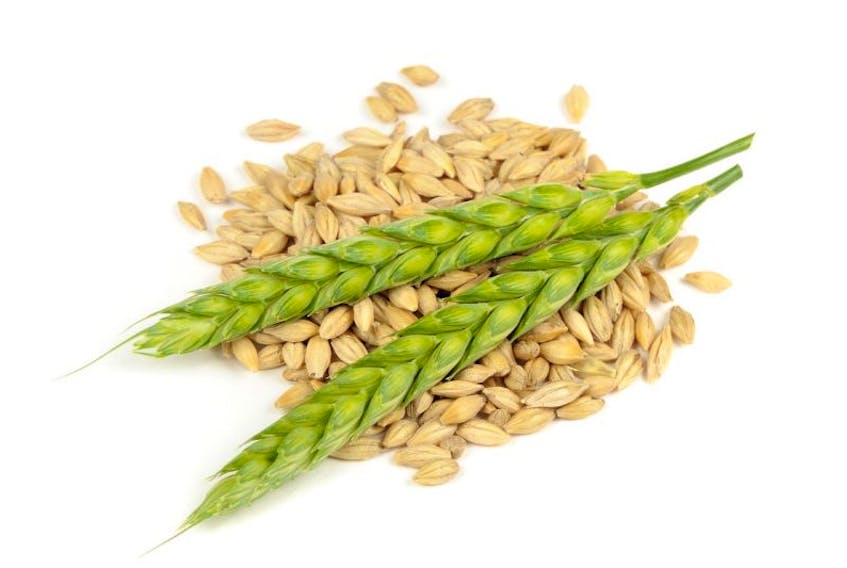But this ancient grain has other culinary uses, as I learned recently.
When I found no rice in the cupboard last week, but wanted to make a stir-fry, I decided to cook barley to serve with it instead. The chewy texture and mild flavour complemented the stir-fry well.
Cooking barley is a process similar to cooking rice. As with rice, the timing differs a bit depending on the type that you are using. The two most common types are pearl barley and pot barley.
To cook pearl barley, combine 250 mL (1 cup) grain with 875 mL (3½ cups) water or broth in a large pot with a tight-fitting lid. Bring to a boil and then reduce the heat and simmer, covered, for about 35 minutes until the liquid is absorbed. Fluff with a fork.
Use the same technique and ratios of liquid to grain for cooking pot barley, but allow at least an hour for the barley to become tender.
Cook pot or pearl barley with finely chopped vegetables in stock, and you get a flavourful pilaf to serve with meat, fish or poultry.
What’s the difference between pearl and pot barley? Pearl barley, the more refined of the two, is processed in a machine called a pearler that removes the hull, bran and endosperm. It is whiter in colour than pot barley, and more uniform in size. Pot barley goes through the pearler too, but for just long enough to remove the inedible outer hull and some of the bran layer, leaving pot barley less refined than pearl.
It’s nothing new to consume barley. People have been doing so for over 4,000 years. It was Europe’s most important crop until the 16th century, and its importance is illustrated by the fact that in Tudor England, the inch was standardized as 3 barleycorns long, the foot 39 barleycorns long and the yard, 117 barleycorns.
In more modern times, barley has become an important crop in Canada, where it is the fourth largest crop (over 8 million tonnes per year), after wheat, corn and canola. About ⅓ of that is exported, and the rest is used domestically, much of it to produce malt that’s used for making beer. Some of it ends up on Canadians’ dinner tables.
Being rich in both soluble and insoluble fibre, barley is a healthy addition to most diets, although people with celiac disease must avoid it because it contains gluten.
Here is a dish that can be served in small portions as an appetizer, or in larger servings as a vegetarian entrée. The meaty Portabellos, and the fibre from the grains make it a satisfying dish.
Bulgur is the type of wheat product that is used in tabbouleh, and is sold in grocery stores and bulk food stores.
Grain and Spinach Stuffed Portobello Mushrooms
adapted from gobarley.com
4 large Portobello mushrooms
10 mL (2 tsp) canola oil
50 mL (¼ cup) chopped onion
1 garlic clove, minced
125 mL (½ cup) pot or pearl barley
500 mL (2 cups) lower salt vegetable or chicken broth
50 mL (¼ cup) whole grain bulgur
2 mL (½ tsp) dried summer savoury
1 mL (¼ tsp) salt
1 mL (¼ tsp) pepper
About 2 L (8 cups) fresh spinach leaves, thinly sliced crosswise
50 mL (¼ cup) shredded Swiss, Monterey Jack or Parmesan cheese
Remove stems from mushrooms and coarsely chop.
In a medium saucepan, heat oil and sauté onion, garlic and mushroom stems 1 minute. Stir in barley. Add broth then bring to a boil. Reduce heat, cover and simmer 30 minutes. Stir in bulgur and continue to simmer 12 to 15 minutes or until grains are almost tender. Stir in savoury, salt and pepper. Stir in spinach. Cover and simmer 4 minutes or until spinach is wilted.
Meanwhile, use a spoon or sharp knife to scrape gills from mushroom caps, discard gills.
Place caps, rounded side down, in a foil-lined pan. Spoon spinach mixture into mushroom caps and sprinkle with cheese. Bake at 190°C (375°F) for 18 to 20 minutes or until mushrooms are tender and cheese is slightly melted.
4 servings
Margaret Prouse, a home economist, can be reached by writing her at RR#2, North Wiltshire, P.E.I., C0A 1Y0, or by email at [email protected],









